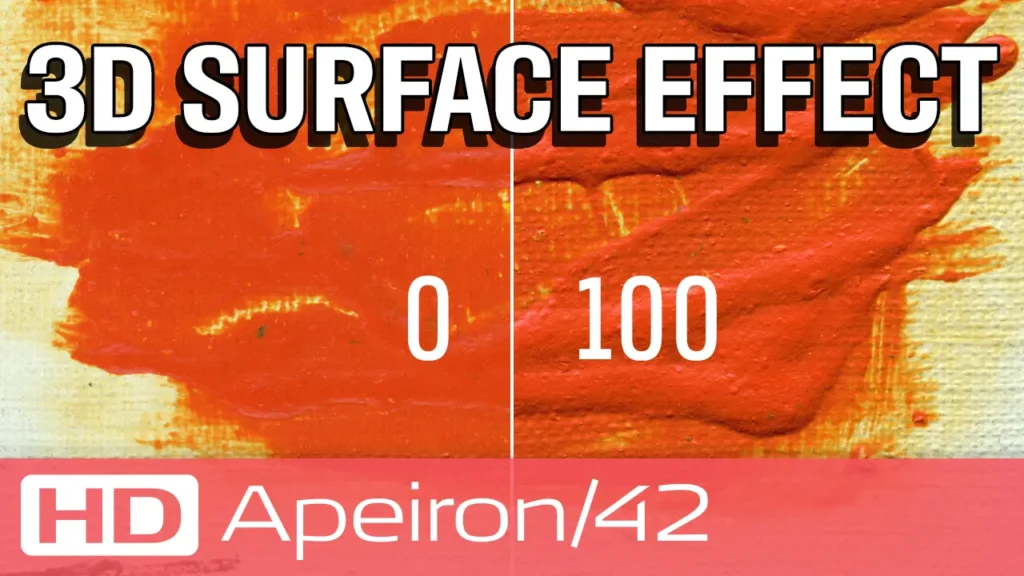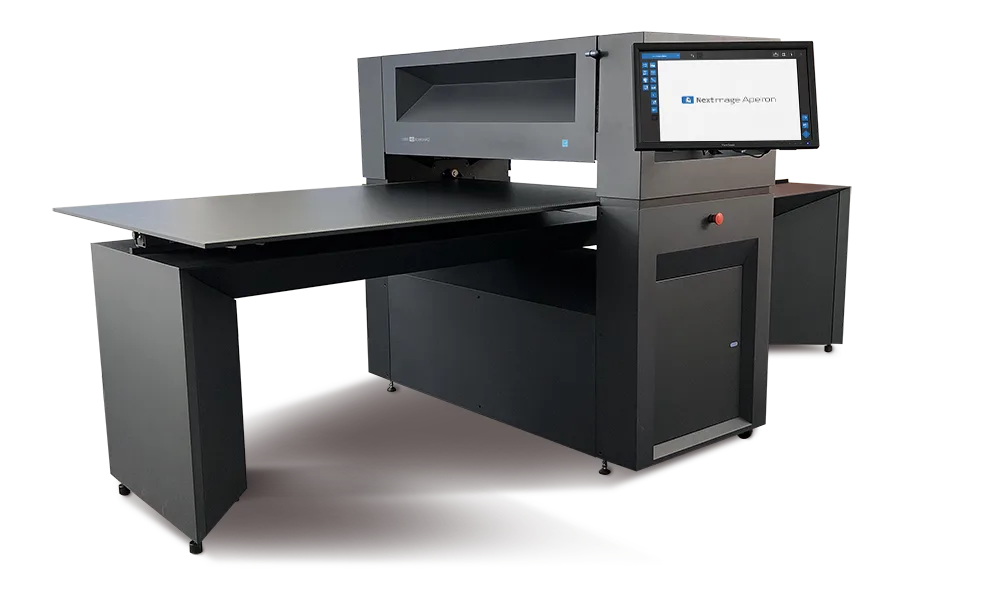![]()
Industry-specific demo rooms
Stay true to the original
HD Apeiron/42 scans fine art and artwork, fabric and apparel, interior design materials, as well as various types of delicate documents and other media.
Scroll down to see how scanning with HD Apeiron/42 results in high-quality images with extremely life-like surface sensations.
Key features
- Scan sizes up to 42 x 60 x 5.1″
- Versatile 3D surface effect, including four options for different angles of lighting
- Up to 1200 dpi high optical resolution
- Complies with FADGI (4 stars) and ISO 19264-1
- Energy Star 3.0 certified
- ICC Color Management is powered by X-Rite®
Multiple exposure scanning for extra high quality
HD Apeiron/42 lets you choose between optimizing your scan result for speed or quality.
Images scanned with ‘Optimize for quality’ are scanned with multiple exposures per scan line to improve the noise reduction even further. This enhances the color depth, improves the overall image quality, and lets the image comply with various image quality standards, such as FADGI**** (4 stars) and ISO 19264-1, if exposures per scan line is set to 4 or above.
Want a live demonstration?
Contact our local distributors to set up an online live demonstration of HD Apeiron/42.
Zero vs. maximum 3D surface effect
See how different the same scan looks whether you set the 3D surface effect to zero (left) or all the way up to +100 (right):




Looking for pricing?
Don't hesitate to reach out to our skilled network of distributors. They will help you get a quote, give you more information or set up a demo.
Live stitching with unique laser technique
Contex’ well-known expertise in calibration and stitching is as present in HD Apeiron/42 as in any of our scanners.
HD Apeiron/42 live-stitches its six cameras using five FDA approved lasers to ensure a 100% correct live stitching result. The cameras consist of premium camera lenses and quad-linear Toshiba color CCDs.
HD Apeiron/42 webinars
Tips and guidelines for HD Apeiron/42 and Nextimage Apeiron
More 1-minute videos
The complete video series is a compilation of 16 tips and guidelines designed to assist users of HD Apeiron/42 contact-free scanner in achieving an optimal scanning experience.
Illumination and lamp positions
No matter if you choose to include the 3D effect or not, your end result is influenced by how you position the two lamps, and thereby the angles of how the light hits your original during scanning.
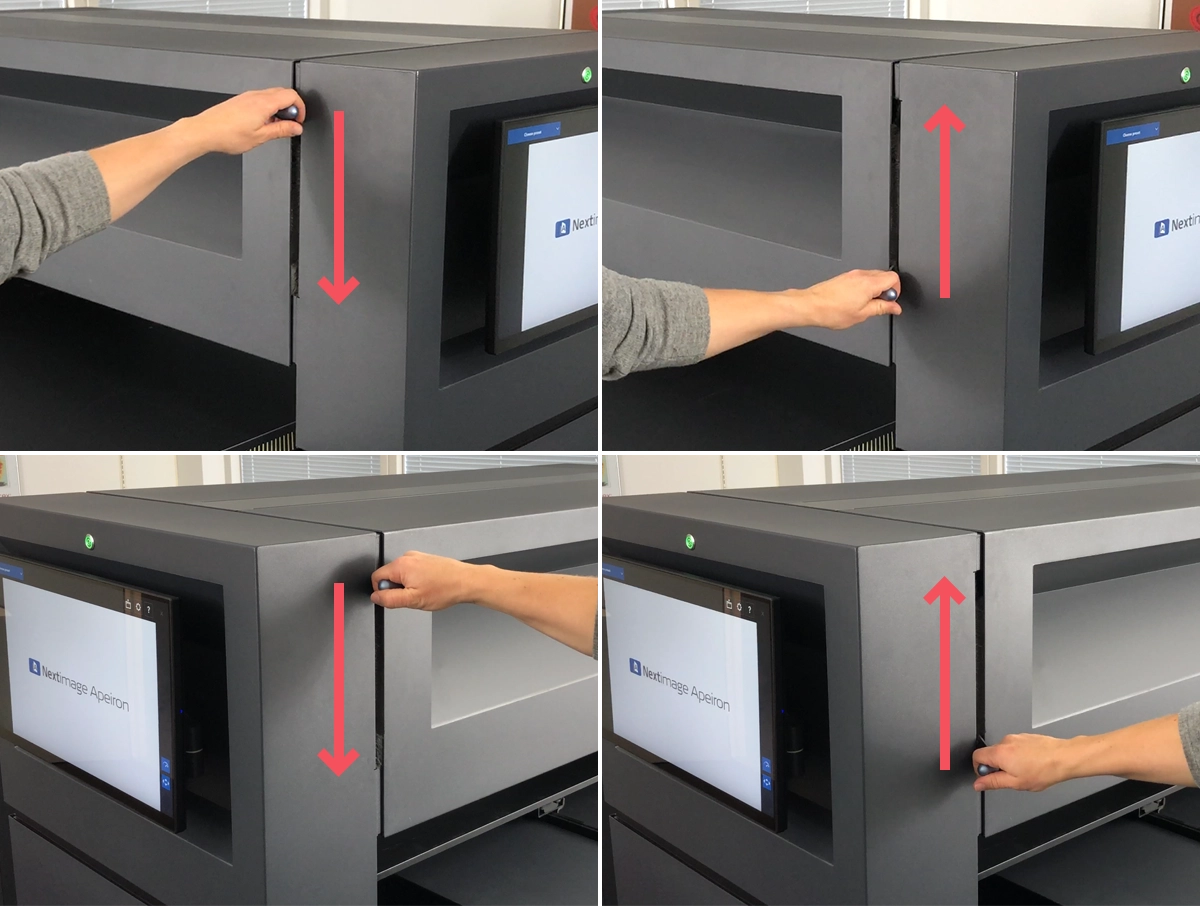
The four options for lighting are made possible by the easily accessible levers on each side of the scan module moving the two adjustable lamps. Each lamp is with dual LED strips mounted in elliptical reflectors. LED spectrums are 2,700K/ 5,000K/, 6,500K and the museum-correct light with no UV/IR radiation uniformly illuminates in all three dimensions, while the scan module shields off ambient light.
The ‘Illumination’ setting in the software indicates where and how much the highlights and shadows will affect the result – depending on how you position the lamps:

Reflective, shiny and metallic surfaces
Because HD Apeiron/42 has four options for different angles of lighting, it is always possible to find a lamp position that allows shiny or partly shiny originals to scan with all details showing.
Coin
American silver dollar
Maximum 3D effect lets the relief on any coin stand out perfectly and show any letters legible.
Download (2 MB)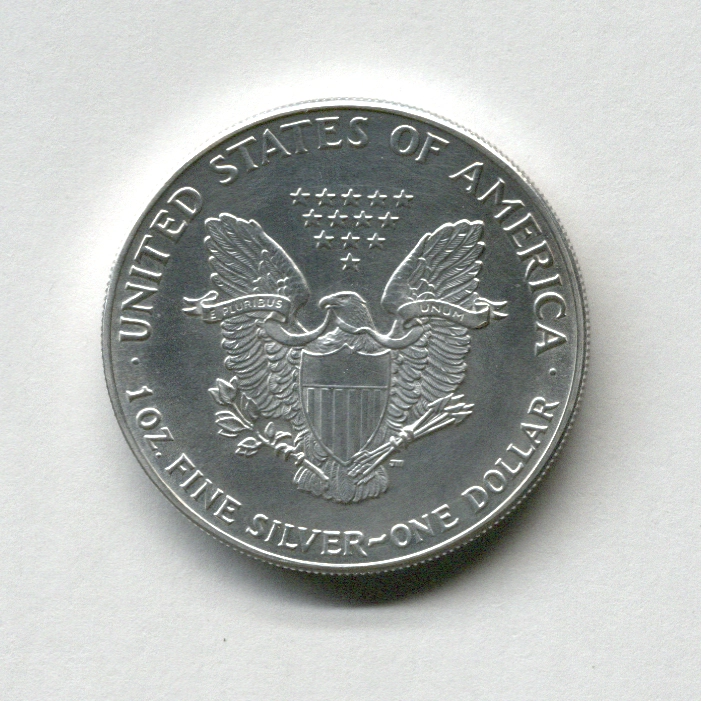
Porcelain dish
Silver and gold porcelain dish
Notice how the different lamp positions change how the metallic strokes look – no 3D effect is used.
More about lamp positions in the ‘Illumination’ section below.
Download (14 MB)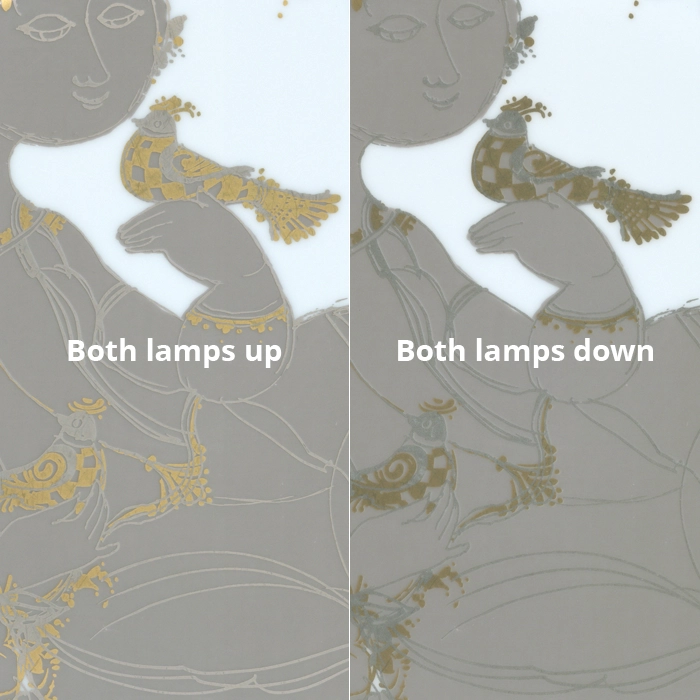
Present your originals in sharp, vivid detail
No more uncertainty – what they see is what you scanned
Deliver stunning reproductions of textures, colors, and surface details that make your digital archive look as real as the original.
Wallpapers



Floor tiles




Industry-specific demo rooms
Instant highlight and shadows effect
Even without the 3D effect enabled, you can get a subtle shadow and highlight effect by scanning your original with the left lamp in the ‘up’ position, and the right lamp in the ‘down’ position. This gives the image an instant look as if being lit from above.
Here it’s a small section of the blue and yellow test painting, scanned in 600 dpi with the lamps set that way (up/down):

Artwork test scan with HD Apeiron/42
Uniform light across the entire scan line
Just as you can emphasize shadows and highlights, it is also possible to minimize undesirable effects, as seen in this example with a watercolor where the badly prepped paper warps and buckles.

Right out of the scanner, with no post-editing at all, the image shows almost no differences in the white areas of the paper, despite the warping edges. By adjusting the 3D values you change how much light from which lamp is used in the final image – the higher the value, the bigger the highlight/shadow effect. Which number to end up with is often a matter of personal preference.
Left: 0, middle: +50, right: +100. Both lamps are set in the ‘down’ position:

See more about
Nextimage Apeiron software
User interface of Nextimage Apeiron software
The award-winning large format scanning software Nextimage is the base of Nextimage Apeiron software specially developed for the HD Apeiron/42 scanner.
Pre scanning
- Choose between presets or make and save your own
- Change parameters, if needed
- Position table and focus plane
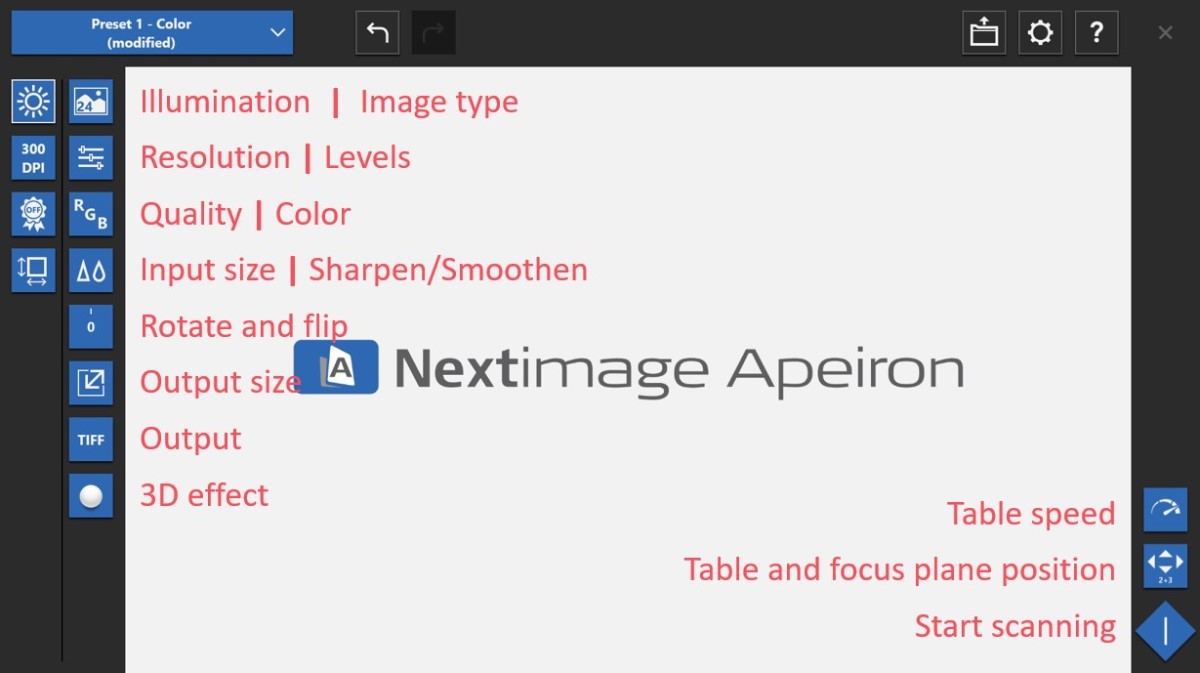
Post scanning options
- Adjust levels and other parameters after scanning, if needed
- Adjust 3D effect after scanning, if activated
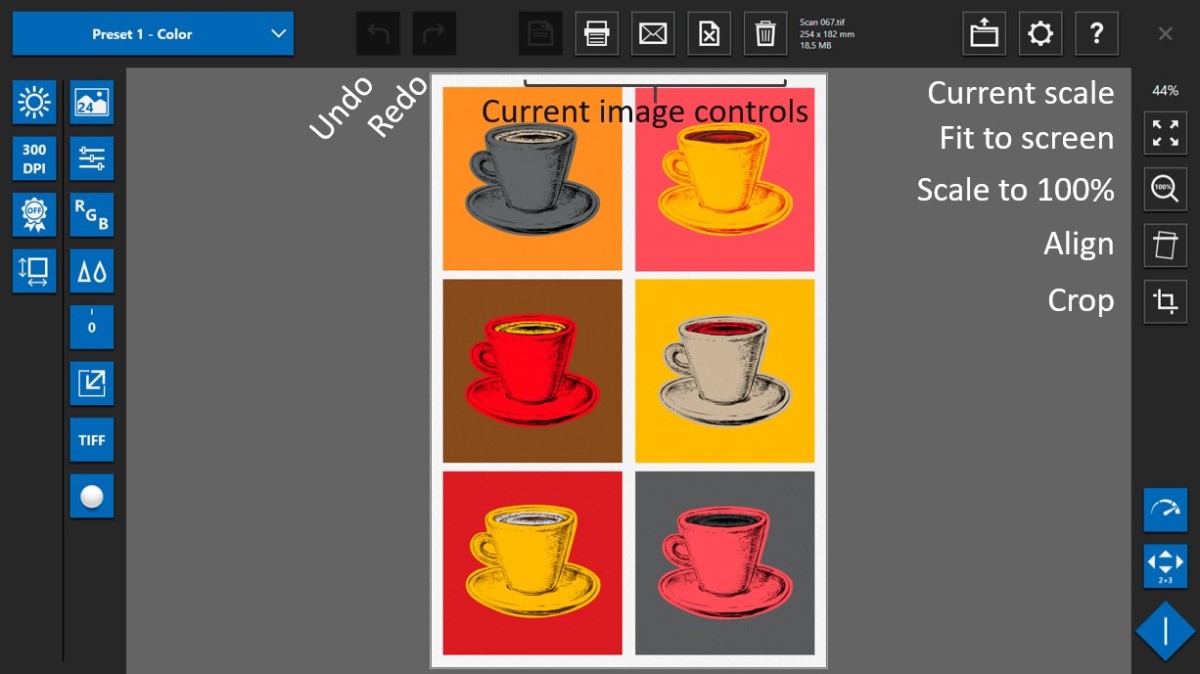



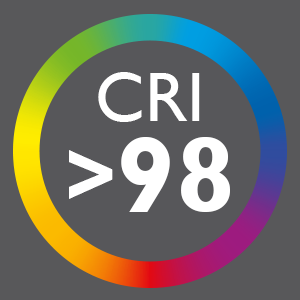
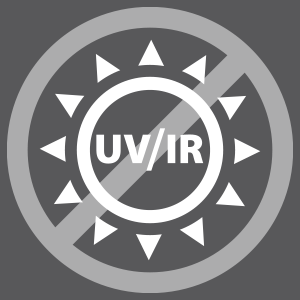

Do you want to know more?
Our skilled network of distributors will help you get a quote, give you more information or set up a demo.


